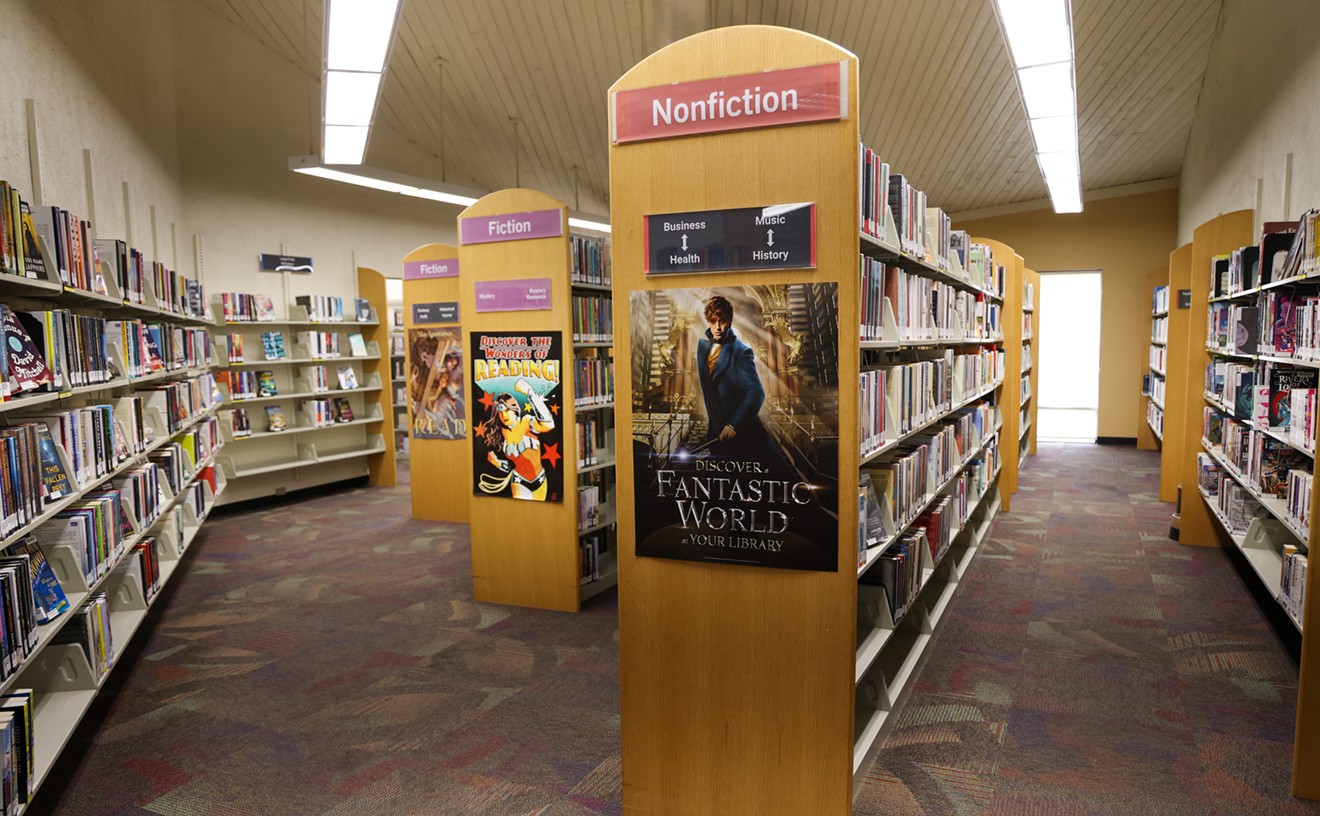As for living writers, two of the six sections in the center's show feature the artist's visual odes to Gabriel Garcia Marquez and W.D. Snodgrass. And he has made pictures based on poems by Robert Pinsky, the current poet laureate of the United States.
"Illustrator" used to be the term for artists who did this sort of thing. But the show's hype suggests that's too humdrum a word for McGraw. Instead, he's a "visual poet" who, in the words of one contributor to the exhibition catalogue, has "transcended the traditional role of illustrator."
The marketing angle here isn't difficult to grasp. Transcendence is better than the usual product claims of "new and improved." But it does make one wonder, better than whom and what? Albrecht DYrer's woodcuts for the Apocalypse? Cranach the elder's illustrations for Martin Luther's translation of the New Testament? The Picasso images published by Ambroise Vollard?
It's a bit puzzling why anyone would want to encourage these kinds of comparisons, or pare McGraw from a tradition which, along with the top-drawer artists mentioned above, short-lists Bonnard, Daumier, Poussin, Rubens, Van Dyck, Titian, Raphael, Holbein and Rembrandt. Admittedly, some of those artists may have cut a few corners by hiring skilled artisans to transfer their images onto the printed page. But overall, they're pretty good company. And their handling of life's and literature's great themes might even shed some light on the challenges of McGraw's task.
McGraw has carved his literary niche with a broad range of media. One room of the show is devoted to a series of sculptures of cutout figures based on the Mad Hatter's tea party in Lewis Carroll's Alice's Adventures in Wonderland. Another is given over to small, brightly colored encaustic (wax) paintings based on Marquez's One Hundred Years of Solitude. There are several series of etchings he has contributed to small-edition books. Yet many of the works in the show--his odes to Mary Shelley's Frankenstein, Snodgrass' poem The Death of Cock Robin, William Blake and John Steinbeck and his musical counterpart Woody Guthrie--are done in gouache.
McGraw takes the Kid Pix path to literary enlightenment in all his media. His whimsical stick-figure style embraces Paul Klee's wish to see like a "newborn child." Problem is, 60 years of lesser artists have turned Klee's once-fresh primitivism into a cliche of houses drawn as rectangles topped by triangles and trapezoids, and people sailing through images--arms and legs splayed, tattered or stretched soft as warm taffy--like rags before the wind.
Too many of McGraw's paintings fall into this category. He poses almost all of his characters in profile--a narrative ploy that makes them appear to be truly in the scene, rather than looking out from it. The peculiarity of most of his images, especially the larger ones, is that they don't have the idiosyncratic details that give children's art its extraordinary personality (see "Picturing Poetry," a small show of children's drawings in the center's Young at Art Gallery). McGraw's generalized blurs of people and things seem more symbolic than real. Yet the symbolism often feels empty. Looking at Blake, he dwells on the symbolism of open windows, geese in flight and angels aloft. However, his pseudoprimitive characters have the ho-hum facelessness of drifters in an overworked fog of brights and darks--happies and sads. And, except for "Gypsy"--an engaging face composed of luminous patches of color--the same seems true of his series of small wax paintings about Marquez's One Hundred Years of Solitude.
McGraw's fans contend that he uses playfulness and childlike charm to lure viewers deeper into the mature woods of human conflict and feeling. They say his responses to writers amount to ideal readings; that instead of slavishly following the script--like the subservient illustrators of yore--he takes it all in, then shines it back out, more as a compass reading and mood than as a road map or story.
But the reading is often too general or trite to be of any relevance. The black-and-blue palette he devotes to Mary Shelley and her creation, Frankenstein, supposedly represents Shelley's "bruised life." But aside from the black and blue, what else distinguishes these paintings from all of the others in the show? What ties them to Shelley and her beloved monster Frankenstein?
Whatever the drawbacks McGraw's fans might see in traditional illustration, the fact remains that the greatest works in that tradition--including the manuscripts and miniature paintings that predated the Renaissance flourishing of books--have the power to transport you through an artist's eyes into the text. Good pictures open a window onto the page. In one swooning look, they summarize the great drama and emotional sense of the story unfolding beside them in words.
McGraw clearly isn't blind to this. His large "Storm Figure" from the "Cock Robin" series has a mottled depth and brilliance. And his large gouache of overalls in his series dedicated to Steinbeck and Woody Guthrie summons the heroic--now romantic--anonymity of that Okie everyman Tom Joad. Yet his greenhouse variety of charm and insight appears to grow best in small settings--like the series of 10 etchings done for "W.D.'s Midnight Carnival," an unbound book that also contains 10 poems by Snodgrass.
The "Human Torch" and "The Carnival Girl Darkly Attracts W.D." have a schematic simplicity that recalls Edward Lear's or James Thurber's knack for filling the liners of their limericks and stories with beautiful and ironic visual commentary. There's plenty of lyric charm in "The Capture of Mr. Moon," which features a man in green and orange toting a blue crescent moon on his back. The condensed lines and sharp, concentrated colors of the prints have the absorbancy of good poems--drawing you into their inscrutable trap of feeling packed with surprises. They show none of the annoying evidences of method--the muddied, splish-splashed gouaches or glumpily handled encaustics--that tend to plague McGraw's larger pieces. Above all, they don't appear to suffer from the hyperventilation of trying to transcend or catch the coattails of proven greatness. They simply sit there on a page, quietly offering their own convincing versions of someone else's story.
"DeLoss McGraw: As a Poem, So Is a Picture" continues through Sunday, February 1, in the Mezzanine and Lower galleries of Scottsdale Center for the Arts, 7380 East Second Street. For more information, call 994-2787 or see the Visual Art listing in Thrills.










